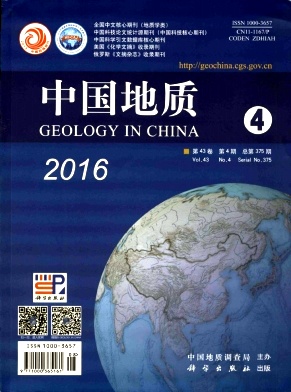LI Sui-min, HAN Yu-chou, WEI Ming-hui, XING Huan, LI Seng-wen, LI Yu-hong. The metallogenic age of the Gaojiazhuang polymetallic deposit in Zhangjiakou area and its geological implications[J]. Geology in China, 2016, (4): 1385-1392. doi: 10.12029/gc20160422
| Citation: |
LI Sui-min, HAN Yu-chou, WEI Ming-hui, XING Huan, LI Seng-wen, LI Yu-hong. The metallogenic age of the Gaojiazhuang polymetallic deposit in Zhangjiakou area and its geological implications[J]. Geology in China, 2016, (4): 1385-1392. doi: 10.12029/gc20160422
|
The metallogenic age of the Gaojiazhuang polymetallic deposit in Zhangjiakou area and its geological implications
-
1.
Hebei GEO University, Shijiazhuang 050031, Hebei, China
-
2.
Exploration and Development Bureau of Geology and Mineral Resources of Hebei Province, Shijiazhuang 050081, Hebei, China
-
3.
No.3 Geological Party, Hebei Bureau of Geological Exploration, Zhangjiakou 075000, Hebei, China
-
Abstract
There are many Yanshanian acid intrusive bodies located in the northeast structural-magmatic belt of Taihang Mountain. The currently discovered polymetallic deposits and precious metal ore deposits are genetically related to the acid rocks of Yanshanian epoch. This study provides the metallogenic age of the Gaojiazhuang polymetallic deposit by means of Rb-Sr isotopic dating. The deposit is located on the northwestern margin of the Dahenan rock mass. Isochron age of (144.5±1.4)Ma is close to the formation age of Dahenan rock mass shown by zircon (U-Pb). Initial Sr isotope ratios (0.7122-0.7123), suggesting that the ore materials of the deposit were derived from the rock mass mainly formed by partial melting magma of crust-derived materials. It is shown that the evolution of Dahenan rock mass controlled the formation of polymetallic deposits in the study area. The metallogenic age of the Gaojiazhuang polymetallic deposit is consistent with the age of the second large-scale mineralization epoch in eastern China, with the geodynamic setting belonging to the tectonic regime transition period. In this unique metallogenic background, the emplacement of granitic magma took place along the intersection of NNE-striking and EW-trending faults. This process provided the necessary heat, fluid, volatile components and metallogenic elements for large-scale metallogeny.
-

-
-
Access History







 DownLoad:
DownLoad: